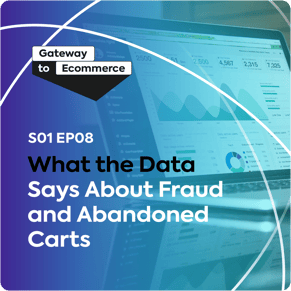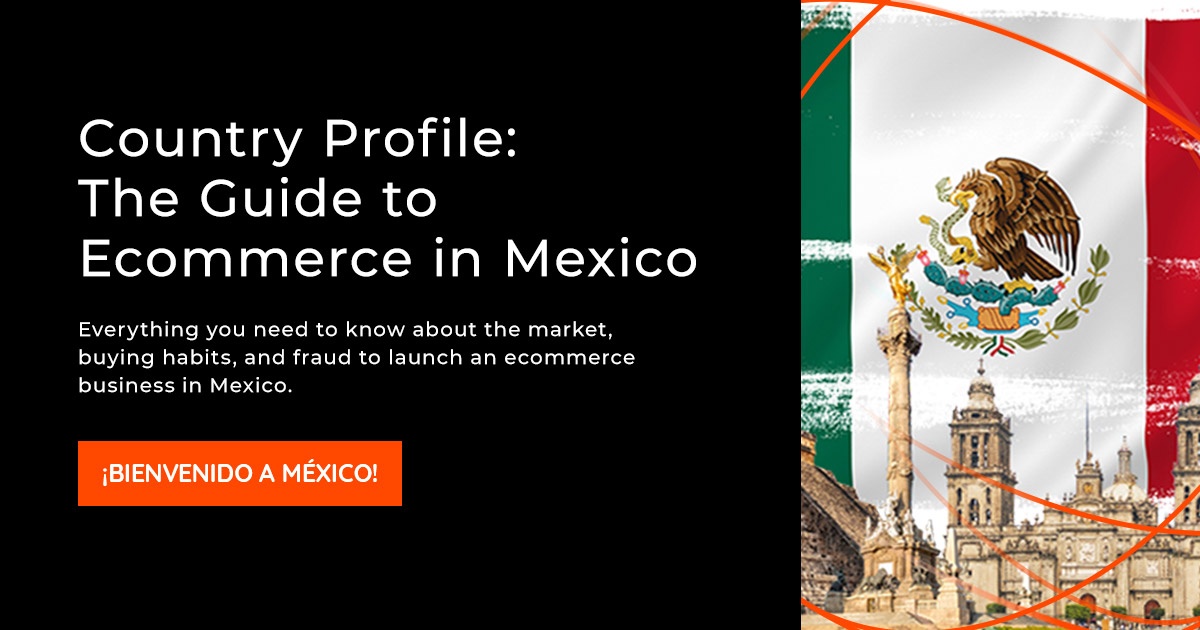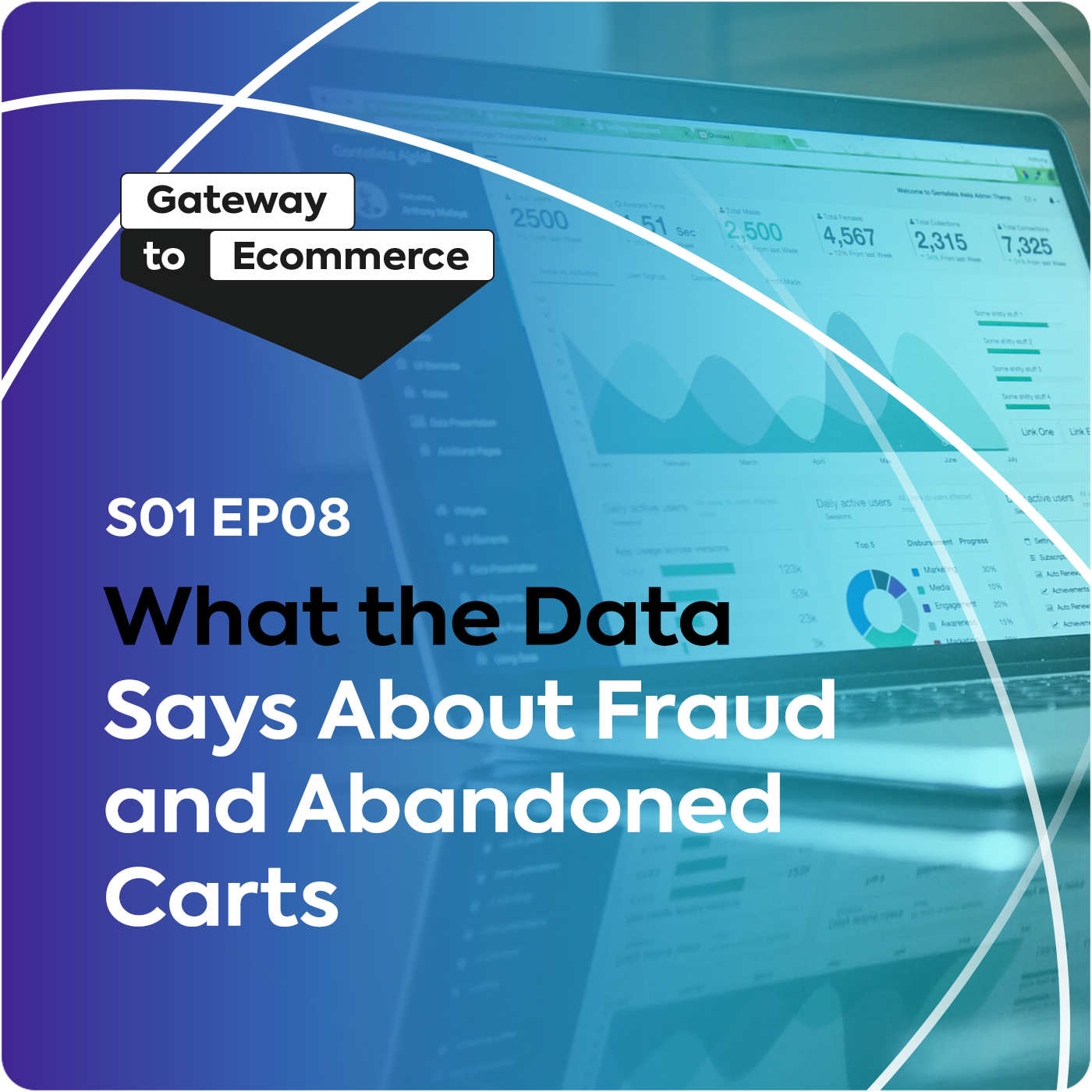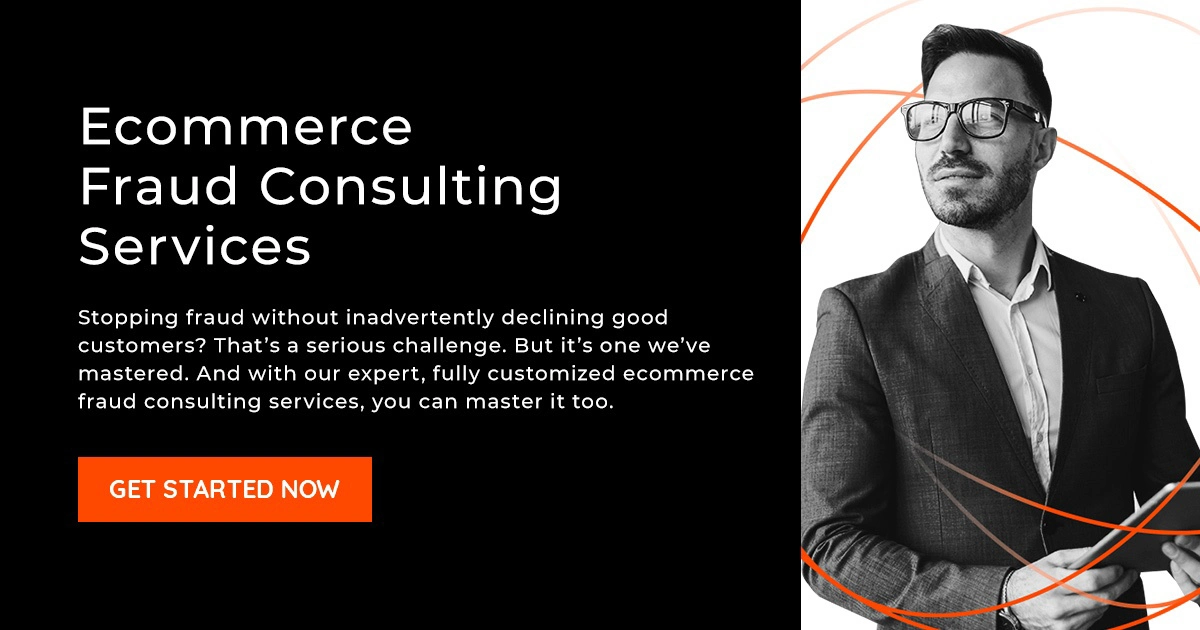episode 08:
What the Data Says About Fraud and Abandoned Carts
Can merchants provide robust protection against fraud without negatively impacting the customer experience? It’s a delicate balance that’s hard for merchants to find. Often, strict fraud rules result in an increase in false declines, which can lead to frustrated, embarrassed and vocal customers. But that doesn’t mean all customers react in the same way — or that all fraud prevention efforts are destined to have the same results.
On this episode of Gateway to Ecommerce, Denise Purtzer, ClearSale’s Vice President of Partnerships and Alliances, and Sarah Elizabeth, ClearSale’s Senior Director of Marketing, discuss a recent Sapio survey commissioned by ClearSale. The survey evaluated different shopper demographics and uncovered some surprising revelations about the impact of fraud prevention and false declines on the customer experience.

Podcast Episode Recap
In our eighth episode, we explore the effects of fraud and false declines on the customer experience. But first, let’s introduce you to our hosts today.
GO TO SHOW NOTES
Who are your hosts?
-

Denise Purtzer
is ClearSale’s (former) Vice President of Partnerships and Alliances and lives for connecting the right people to make things happen. Denise has 20 years of experience in ecommerce and knows the landscape from every angle, for every size business, in every market.
-

Sarah Elizabeth
is ClearSale's Senior Senior Director, Growth Strategy (Former Senior Marketing Director) at ClearSale and is an eight-year veteran of the company who helped open ClearSale’s first full-service branch outside Brazil. Sarah’s an expert in planning, marketing, go-to-market strategies and sales, and she knows exactly how to drive traffic into—and down—the sales funnel.
What’s the Potential Impact of Fraud Prevention?
There’s a lot that goes into your ecommerce store — like deciding what you’re going to sell, to whom and where. But that’s not all you want to consider. You also need to think about the potential risks of selling online.
Many consumers are still suspicious of placing online orders, worried that their personal data is going to fall into the wrong hands. And rightfully so. More than 20% of U.S. consumers alone have experienced online fraud. While implementing a robust fraud prevention program can help reduce that risk, it may result in others, like an increase in false declines. If not implemented correctly, fraud prevention systems can also:
• Increase customer frustration by asking them to submit proof of identity
• Reduce the chance of a consumer trying their purchase again if their first attempt is declined
• Increase the chances of a customer never shopping with you again following a false decline
• Increase the likelihood of an upset customer posting a negative review on social media
How to Prevent Fraud While Improving the Customer Experience
Luckily, protecting your business against fraud doesn’t have to take away from an amazing customer experience. Instead, it’s all about striking the right balance between security and friction. Here are some factors you’ll want to consider:
• Will two-factor authentication increase friction or facilitate sales?
• Will the security features I implement result in a slower page load time for online customers?
• What are the risk tolerance levels for customers in the countries I’m selling in?
• How can I prevent automatic declines?
Stay tuned for upcoming podcast updates and new episodes.
episode Transcript
Podcast Introduction
You’re listening to Gateway to Ecommerce, a podcast by ClearSale. In this series, global ecommerce leaders discuss challenges, best practices, new tech, and secrets to success. And now your hosts, Sarah and Denise.
Denise Purtzer
When we started working on this podcast, there was a question that came to mind of: Have you ever really thought about if it’s possible to provide great security on the back end and still continue to have a good experience for the customer?
And that’s exactly what we’re going to delve into today, based on a survey that we commissioned in March (2020) with Sapio Research. And it was a survey that talks just about these points.
So Sarah, you were instrumental in creating that survey and working with the team at Sapio. What were your thoughts, and what were you trying to get out of it when you commissioned it?
Sarah Elizabeth
First of all, it’s important to mention that we did the survey with five different countries. So one of the things that we wanted to see was how people behave in each one of these countries.
So today, we’re going to talk about the U.S., but we also have data from Mexico, Australia, the U.K., and Canada. We were looking to understand the behavior of people with regard to fraud protection, data security and how this impacts their purchasing behavior on the internet.
We can say that the main findings that we have, is that the tariff and the fraud protection matter for customers, but they cannot sacrifice a customer experience, which is really hard. We are going to talk further about this, but it is important to keep a balance here.
And also the impact that follows the client is something that we are also going to talk about later, and maybe you never thought about that. So we have some interesting things to share today.
Denise Purtzer
I think it’s interesting that we commissioned it by country, and that’s so important to note as well, because as you start to dig into the information, you do see a lot of differences from country to country and what is important, like the amount of trust a consumer has, all these things come into play. So given that, what was the first thing that you wanted to bring up?
Sarah Elizabeth
Let’s start from the beginning — so before a person goes to your online store to make a purchase. We found out that 42% of people say that the possibility of online scams and fraud prevent them from shopping online. It’s surprising that still nowadays we have people that don’t trust the internet to make purchases. This is something that you as a merchant can help to change by communicating with your buyers and showing them that your site is legit and things like that, so they can break this barrier of being afraid and become one of the many, many people that are nowadays buying online regularly. It’s understandable that people are afraid, because we also found out that 21% of people in the U.S. already experienced online fraud, which is a pretty high number.
And we also have the fact that people understand that fraud protection is important, so we have 56% of people saying that fraud protection is important for their online privacy and keeping their data and behavior private from other usages. People understand that this is important and that it’s a relevant topic nowadays. But on the other hand, when we look to older people, people over 55, we found that only 45% of these people believe that online fraud protection is more important than online privacy. So we see here that older people are more aware about what we are going to do with their data. So it’s important to keep your communication clear with them. And lastly, on this topic, we found that 84% of people are more likely to shop from trusted websites. Even if they have a price that’s slightly higher or the delivery time is slightly longer. So here’s something that we also talk about, that the customer experience and the experience of the person on your website is sometimes much more important than the price, and that competing only on price nowadays might not be the best strategy for you.
Denise Purtzer
That’s so true. And there’s a lot to digest there and a lot to consider. So if you’re a merchant and you’ve got a site and you’re selling electronics there — we’ve talked about this in a previous episode where electronics might be one of those first products that people buy. And that goes back to that branding that you talked about, because if you’re selling an Apple iPhone on your site, as an example, people trust and know that an Apple iPhone is always going to be an Apple iPhone, but then it gets a little bit more complicated. If you’ve got a product like a clothing line that you own, or a handbag line that you’ve created that’s your own brand, and you’re still trying to establish that brand, there are a lot of other things that you have to consider. So yeah, making it clear to them that it’s a welcoming store, that it’s a secure store. All these sorts of things come into play and are very, very important. That’s so true.
Sarah Elizabeth
Yeah. Which connects us to the next topic, which is, what is the impact or what might be the potential impact of fraud protection? The customers abandoning a purchase. What we found in this survey is that 80% of people will likely not proceed with the purchase if the merchants asked them to send copies of documents, which is something that unfortunately we still see companies doing nowadays, if you’re buying something, let’s say for the first time people asked you for a copy of your picture ID, you’re holding your picture ID so they make sure that you are the person in the picture and things like that. Almost 65% of the people wouldn’t call the customer service in order to confirm data. So if you ask them to actively call you to confirm data, 65% of people would say they wouldn’t do it. And 35% of people wouldn’t try again after having a transaction declined. For some people, it’s not that you are going to decline and ask them to try again with different information. Thirty-five percent of people say they wouldn’t do it. They would just give up. And 29% say they would abandon a purchase if they failed at too many data security steps.
So it’s important here that you keep those facts in mind. So you balance your strategy of fraud protection versus the customer experience that you’re having.
Denise Purtzer
That’s so true. And you touched on some really big stats there. If you start digging into it, those are all opportunities from the merchant’s perspective to lose customers. And you think back to marketing 101 or ecommerce 101 where you learn from the early days that every single click that you make a customer do throughout that process, that means you have the potential to lose them within that process. And this is no different. The stat that stands out to me, that 64% wouldn’t call the customer service to confirm data. That means that the majority of people probably wouldn’t finish that transaction. So if you are putting yourself into your customer’s shoes and saying, okay, what are the tolerances? And oftentimes we find merchants don’t even know what are the processes behind the scenes.
So if they’re outsourcing their fraud services and somebody is injecting these services into the process, it’s something that could be unbeknownst to the merchant. So as a merchant, you should be talking to your third-party services across the board and finding out what exactly is the customer experience and is that something that you want to present to them? Because these are all things that are ways to really lose customers at the end of the day. It takes us to the whole false decline piece too, though, right? Because if you’re declining, people are making it hard for them to purchase, and they’re good customers that’s a whole ‘nother piece that we talk about constantly, that false declining. And I think we’ve got some data around that as well, don’t we?
Sarah Elizabeth
Yes, we do. So just to remember, people, we always talk about false declines, and what do we mean here? It’s when a transaction from a good customer is declined, we call it false decline. So, that transaction shouldn’t be declined. And here we found some really interesting numbers. We found that 28% of people have already experienced a declined transaction when purchasing online. And what is really interesting here is that 33% say that if a merchant declined their payment, they will never place an order with the merchant again. And when we asked the same question, if they had a fraud with that merchant? So if their data was used by someone else with that merchant to place a fraudulent order, only 19% say they will never buy from the merchant again. So customers are much more willing and understand much better the fact that their data might be used for fraud, but they are much less willing to forgive a website when they decline their payments. So it’s really interesting.
And what is also interesting here is that these numbers, they vary by country, as we mentioned in the beginning. So if you see the percentage of people that wouldn’t ever place an order again in Mexico, they had a transaction decline, this number is 51% versus the 33% for the U.S. that we just mentioned. This is a huge difference. That’s why we did this survey by country, because we know there are differences, and we are going to be exploring more of these numbers in future episodes, if you’re interested to learn more. And finally, 25% say that if they had a transaction declined, they will probably post something negative on social media about your brand. So we know the impact that this might have on your brand, on your strategy, on your sales. So it’s really important to pay attention to your fraud protection service, or how you are handling this internally, to make sure that you don’t decline payments from legit customers.
Denise Purtzer
So that second point you brought up with 33% say that if a merchant declines their payment, they’ll never place an order again, but only 19% say they would not buy from the merchants if their data was breached in some way. So to me, that was boggling, because it just shows that we have a tolerance, here in the U.S. especially, for fraud breaches, and people understand that there is an inherent risk with shopping online, but it’s still that psychological embarrassment and everything that goes along with it, with getting a decline falsely, if you go into it knowing that you’re a good customer and you want to make a purchase, that’s more jarring. So to me, that was the biggest point there. And the biggest “aha” from that data I thought that was quite interesting.
Sarah Elizabeth
Yeah. If you think about when you have a transaction declined, you already went through the other process of choosing where to buy, choosing what to buy. You already entered your data on the checkout, you already did everything. So you already had work that is going to be lost by the moment that the merchant declined that transaction.
Denise Purtzer
Yeah, they’re invested, right?
Sarah Elizabeth
Yes.
Denise Purtzer
Exactly. And it’s interesting to think about that as well, and dissecting the types of clients that you have, because I think nobody knows your client base better than you do as a merchant. And you have to think about all these different layers and intricacies, not only with your current clients, but also with who you want to attract in the future as well. Because you might just not be attracting a certain segment if you’re not seeing it in your data, and these are all things to consider as well, even if it’s beyond who your target audience is.
Speaking of that, I think that the next point that you’re going to talk about, around SMS and two-factor authentication, is really interesting when you talk about different segments of clients as well. Because with the older population, I was reading recently where only four out of 10 boomers have smartphones. And so you think about how people are purchasing as well. So based on that, could you talk a little bit about that two-factor authentication, what it is, and smartphone purchases?
Sarah Elizabeth
Sure. When we say that there’s a two-factor authentication, what we mean is that we need an extra layer of information to confirm the order. So the most common here, it’s sending a text message to the person that is placing the order. So they receive a token and they can type the token on the website, which nowadays many merchants think that it’s okay, because we live in a time where everybody has their phone on their hands all the time, right? So if you think about many times you were purchasing online on your desktop, or on your laptop at home, or at your work environment, these are times that not necessarily you have your phone in your hands — it’s not like you’re walking in the street with your phone. So what we found is that 24% of people say that they have their cell phone in their hands less than 4% of the time.
So it’s a quarter of the people that, if you ask them to type a token, maybe they’re going to give up and they’re going to be too lazy to do so. And 40% of people say that they have the cell phone in their hands less than 80% of the time. And you have similar conclusions when you talk about having a credit card in hand, in case you’re thinking about asking people to retype information from the correct credit card, it’s similar to the cell phones where we have 25% say that they have the cell phones in their hands less than 40% of the time. This number is 26% for credit card holders. And 62% say they have their credit cards in hand less than 80% of the time. So again, any friction action or potential friction that you might have in your checkout process increases the chance of cart abandonment, of course.
So it’s interesting to make people think about this. So we always say that extra seconds on your checkout process, or how many clicks you’re doing, have an impact on your conversion rate, but people don’t say too much about the payments process, or the payments experience of your website. So these are just some facts that might invite you to think about what is the checkout process for your store when you think about payments and what are the potential impacts that you have when you’re adding an extra layer of security, especially if you want to say that 33%, 35% of people never buy on your store again if they have a transaction decline. You’re not only losing that transaction, but you’re losing that customer’s lifetime value because they probably won’t ever come back in the next years, which is a pretty high impact. If you think about it.
Denise Purtzer
It’s so true. You spend so much time and effort to try to get customers to your site and then to lose them because of something as simple as adding an extra second or adding an extra step for them. It’s almost insane to think that you would allow that to happen as a merchant. So a challenge to merchants would be to look at that process and those stats and the different events that occur after that payment is entered. Because I think a lot of times when I talk to merchants, they think, okay, the payment’s entered and then it’s out of their hands and it’s done. And it isn’t, all the time.
I think we’re seeing from these stats that there’s potential for fall-off and potential for improvement on the part of the merchants, which takes everybody to that whole point of thinking for the holiday season and making improvements and making sure you’re streamlined as much as possible for the holiday season. And I think you have to also consider the fact that during the holiday season, there are a lot of first-time buyers, and this could hit them harder if you don’t improve these processes, but it could also win over customers for a long time and make them into multi-time buyers for you and repeat customers over time. So there’s definitely a potential upside there for you.
Sarah Elizabeth
Sure. And it’s also important to think that we’re not saying that you should never use a text message or a token, or that we can never use customer service to help to approve an order. It’s just that there’s no one-solution-fits-all here. So you have to be smart about when you are using each one of these strategies. Sometimes you are selling to older people, younger people, people in different countries. Sometimes you might use some of these strategies as the last resorts, because you will be declining the transaction anyway. So it’s really important to think about your business and what makes sense for you.
Denise Purtzer
So Sarah, you’ve shared a ton of numbers today and a ton of interesting and compelling thoughts for the merchant to put into play. And I think the biggest takeaway is really around that customer experience and making sure that we are setting them up for success in that purchase process and not leading them down the path that’s going to make them go astray. So given that, this full report will be available to you so that you can digest even more information, and that’s on our site, www.clear.sale. In addition, we’ve got articles and blogs around different aspects of the impact on a locale-by-locale basis. So be sure to check out the blog as well.
As we wrap up, remember that we want to thank you for listening to the Gateway to Ecommerce podcast, where global ecommerce leaders discuss challenges, best practices, new tech and secrets to success. Subscribe to our podcast on Apple, Spotify, or Google Play. And please leave us a review. We’d appreciate that. Join us next time for episode nine, where David and Rafael are going to talk about going into the holiday season. We’ll see you then.
Podcast Outro
For more ecommerce insights, visit us on our website at www.clear.sale.













